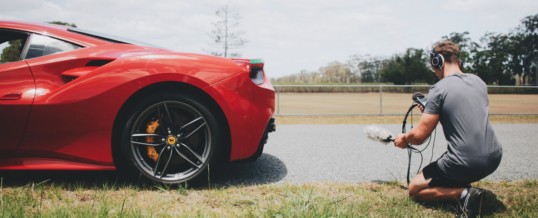
When it comes to sound level measurements, there are three types of time weighting that you see: Slow, Fast, and Impulse. In this article, we’ll talk about the difference between these ways of weighting and where they came from.
The terms slow and fast weighting go back to the days of analog sound level meters. Analog meters had a needle that would point to numbers on a scale. With differences in manufacturing and design, some of these needles reacted faster than others to changes in sound. As a result, it became difficult to compare sound levels.
When digital sound level meters became popular, acoustical professionals decided on standards to improve consistency across sound level meters and to improve calibration techniques. The result was the IEC-61672 standard, which sets the definition for the three types of weighting. Let’s take a minute to talk about each one.
Slow
A sound level meter set to a slow setting has a one-second response time. This means that a it will take one second for a sound level meter to get up to the level of a constant tone. The slow setting is good at “ignoring” short, fast sounds like car doors slamming or balloons popping. The slow setting gives the smoothest output of the three weighting types, a sort of “average” sound level. This makes slow weighting a good choice for environmental noise studies, especially for studies that span many hours or even days. Slow weighting is noted with a capital S. For example, LAS means “A-weighting level with slow time-weighting.”
Fast
A sound level meter set to a fast setting responds to changes in sound in 0.125 seconds (125 milliseconds). That’s about eight times faster than the slow weighting response. As you might imagine, the fast setting is more responsive to short, fast sounds than the slow setting. However, the fast setting is not perfect at measuring quick sounds, and still tends to output a relatively “average” sound level. The main difference between fast and slow weightings is that fast weighting gives higher resolution—a more detailed picture, if you will—of the measured sound. Fast weighting is noted with a capital F. For example, LZF means “Z-weighted level with fast time-weighting.”
Impulse
Impulse sound weighting is by far the least common of the weighting types. It was originally designed to measure sound levels for impulses—short, loud sounds—like gunshots and explosions. Today, it is more common to see peak levels used to talk about impulsive sound. Impulsive weighting has the quickest response time (0.035 seconds or 35 milliseconds). That’s about 4 times faster than the fast weighting response. One quirk of impulse weighting is that it has a slow decay. This was designed to mimic the human ear, which responds quickly to rising sound levels, but takes time to relax after the onset of such sounds. Impulse weighting is denoted with an uppercase I.
Summing it Up
No matter which weighting type you use for your measurements, make sure you choose the right one for a given application. It’s important for sound studies to follow best practice, community noise ordinances, and manufacturer recommendations (although not necessarily in that order.) Sound levels are a powerful metric for determining the noise conditions of a site. Many sound level meters will let you measure with multiple weighting schemes at once. This functionality can be nice for developing a comprehensive understanding of sound levels at a measurement location.
Further Reading
https://en.wikipedia.org/wiki/Sound_level_meter
AUG
2019

About the Author: